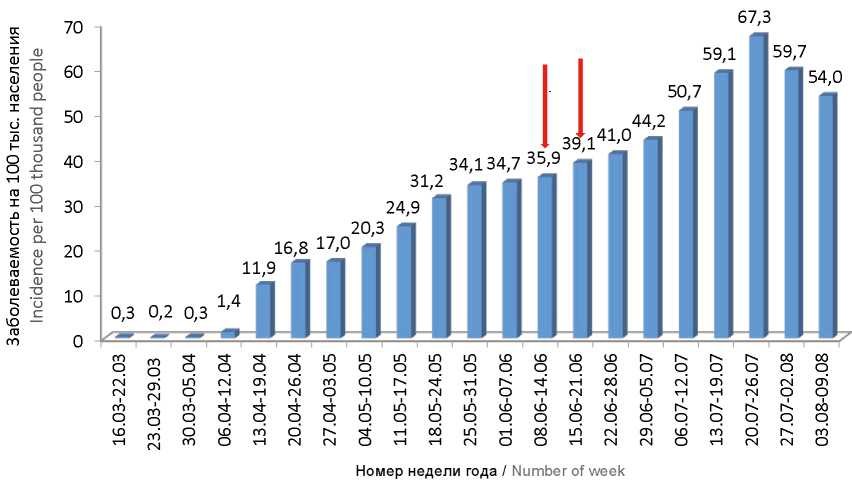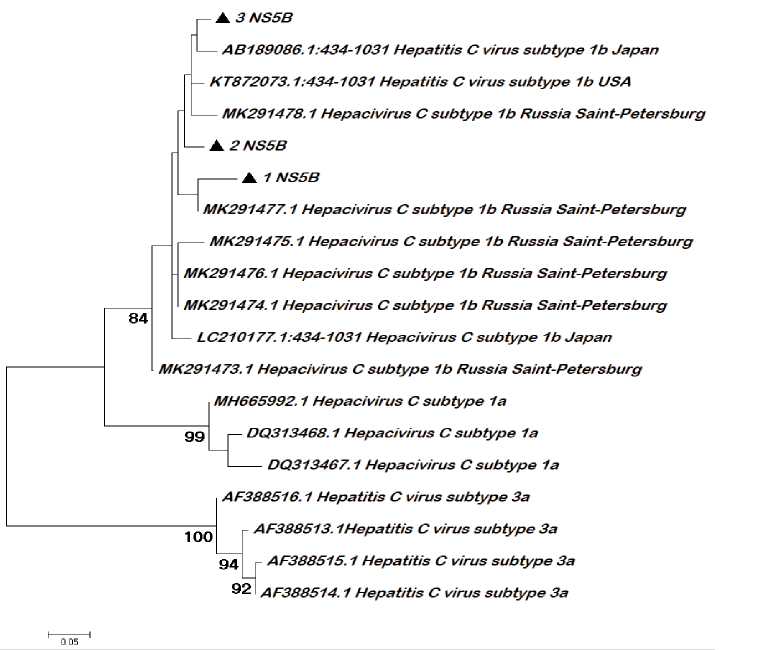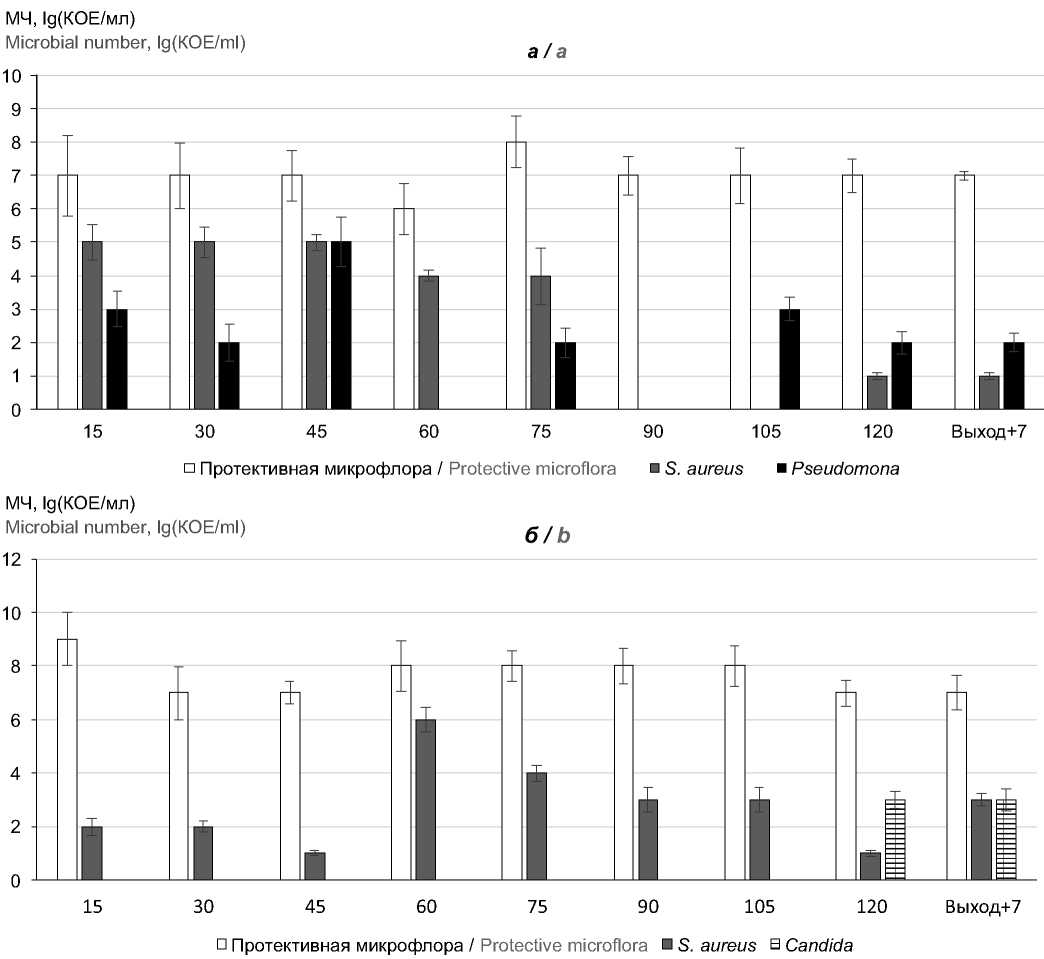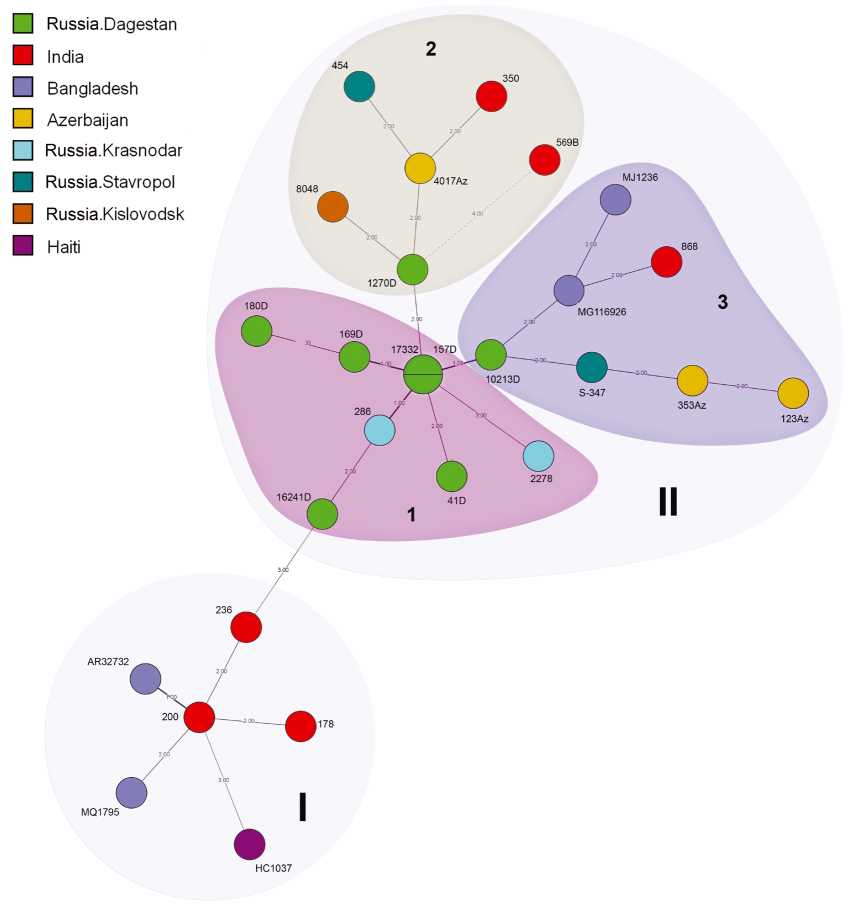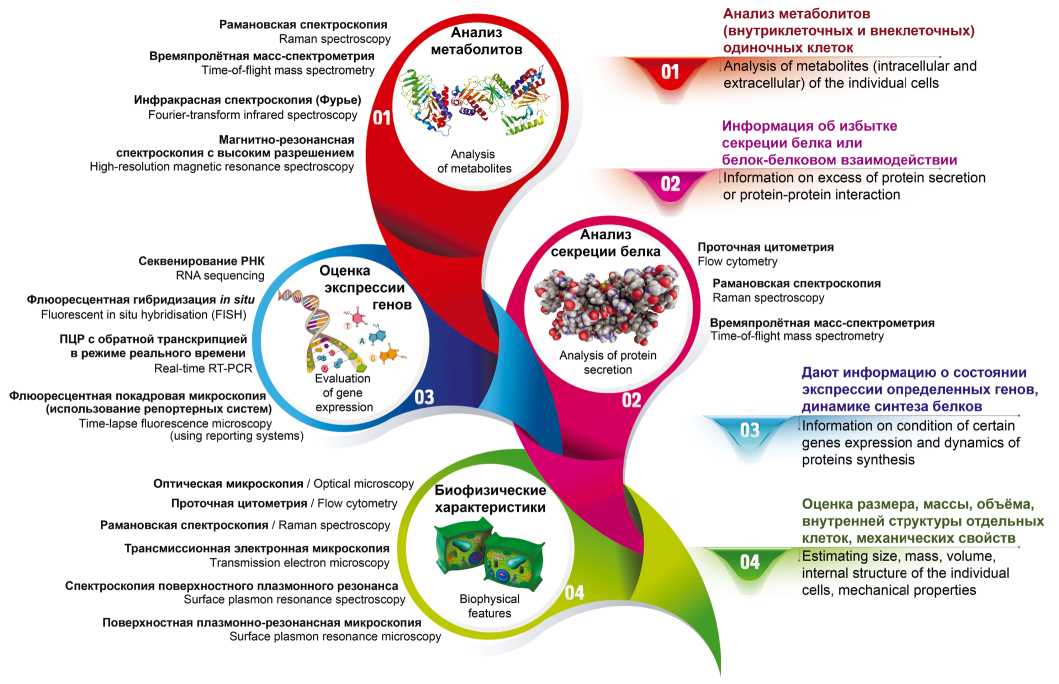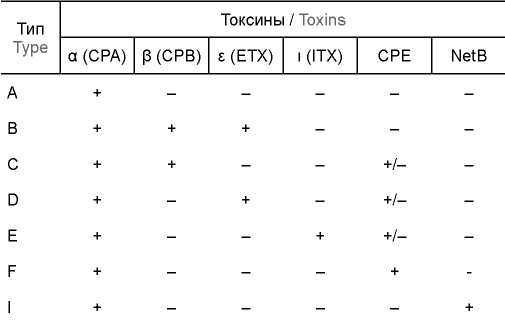Vol 98, No 1 (2021)
- Year: 2021
- Published: 04.03.2021
- Articles: 14
- URL: https://microbiol.crie.ru/jour/issue/view/42
Full Issue
ORIGINAL RESEARCHES
The seroprevalence of SARS-CoV-2 among residents of the Khabarovsk Krai during the COVID-19 epidemic
Abstract
Introduction. The coronavirus disease (COVID-19) pandemic was announced by WHO in February 2020. In the Khabarovsk Krai, the first three cases of the disease were diagnosed on March 19, 2020, these cases were imported from Argentina (transit through Italy). The epidemic process of COVID-19 in the Khabarovsk Krai is characterized by a slow increase in the incidence. During the period of time when the SARS-CoV-2 seroprevalence study was conducted the incidence rates varied from 35.9 to 39.1 per 100 thousand population. Within the next 5 weeks the incidence continued to increase, the maximum level was 67.3 per 100 thousand population. A statistically significant decrease in the incidence is noted in the first decade of August. The study of the SARS-CoV-2 seroprevalence among residents of the region was carried out from June 9 to June 21, 2020 during the period of increasing intensity of the epidemic process of COVID-19 infection.
Aim. To determine the level and structure of herd immunity to SARS-CoV-2 virus among the population of the Khabarovsk Krai during the period of intensive spread of COVID-19.
Materials and methods. The study was conducted as a part of the first stage of a large-scale Rospotrebnadzor project to assess the herd immunity to SARS-CoV-2 virus among the population of the Russian Federation, taking into consideration the protocol recommended by WHO. The selection of volunteers for the study was carried out by the method of questionnaires and randomization by random sampling. The results of a survey of 2675 individuals were included into analysis. The number of volunteers in all age groups was similar.
Results. The results of the study showed that the herd immunity to SARS-CoV-2 in the total population of the Khabarovsk Krai was 19.6%. The maximum level of herd immunity was observed in children 14–17 years old (34.4%), children 7–13 years old (24.8%), and people over 70 years (22.6%). The highest level of seropositivity, except for the children and the elderly, was found among educational workers (26.7%). The lowest level of seropositivity was found in the military (8.7%) and the unemployed (8.3%). There were no statistically significant differences in the level of seroprevalence between men and women.
Conclusions. The results of the seroepidemiological study demonstrated that in the Khabarovsk Krai, the presence of the contacts with COVID-19 patients is associated with the 1.4-fold increase in the likelihood of the seroconversion. Antibodies were detected in 58.9% of the past COVID-19 cases. In individuals with the previous positive PCR test result, antibodies were detected in 50% of cases. A high rate of asymptomatic infection, up to 93.7%, was observed among seropositive volunteers.
 7-17
7-17


Detection of drug resistance mutations of hepatitis C virus in patients with failure of the treatment with direct acting antivirals
Abstract
Background. The development of direct acting antivirals (DAAs) has spurred a revolution in treatment of patients with chronic hepatitis C. However, there are cases showing no response to treatment. In 5% of cases, the viral breakthrough is most likely caused by DAA resistance mutations in the hepatitis C virus genome.
The purpose of the study is to detect drug resistance mutations of hepatitis C virus in patients with DAA treatment failure.
Materials and methods. The study was performed on plasma samples from 3 patients diagnosed with chronic hepatitis C virus infection and demonstrating DAA virological treatment failure. All isolates had genotype 1b. Drug resistance mutations were detected by using direct sequencing of NS3, NS5A, and NS5B genome regions. The detection technique was developed at the Pasteur Research Institute of Epidemiology and Microbiology.
Results. Drug resistance mutations were detected in all cases. By using the Geno2pheno [hcv] 0.92 tool, nucleotide substitutions were detected in different viral genome regions and presumably caused resistance or decreased sensitivity to antivirals both present and absent in the sofosbuvir + daclatasvir combination therapy. Antiviral treatment failure in patients with chronic hepatitis C is caused by drug resistance mutations.
Conclusions. The developed technique is efficient for detection of drug resistance mutations in NS3, NS5A, and NS5B regions in cases of virological failure of DAA treatment.
 18-27
18-27


Moraxella osloensis as a part of genital tract microbiota in infertility: incidental findings or pathology markers?
Abstract
Aim. To assess the potential role of M. osloensis in genital microbiota of infertile males and females..
Materials and methods. Samples from men’s urethra and women’s posterior vaginal fornix in barren couples of the reproductive age were examined. Cultivation was carried out using elective culture media with subsequent identification of strains by biochemical properties. A metagenomic study of 16S ribosomal RNA samples was performed on the Illumina MiSeq platform using the MiSeq Reagent Kits v3 kit (600-Cycle Kit).
Results. Metagenomic study of samples from genital tracts of barren married couples, as well as from patients with suspected «acute genital gonococcal infection» demonstrated that all samples (100%) contained fragments of the Moraxella spp. genome, mostly in a huge amount, among which M. osloensis occupied leading positions. In women, the proportion of M. osloensis was twice as large as in men (25.3 ± 9.0 and 11.7 ± 9.3%, respectively). A high frequency of association of M. osloensis with other opportunistic pathogens, G. vaginalis and E. faecalis in particular, was established. It appears that M. osloensis can contribute to development of asymptomatic inflammatory process. Moreover, the constant presence of moraxellas in the microbiota during gonococcal infection may indicate their certain pathogenetic activity, and the synergistic nature of the relationship between M. osloensis and N. gonorrhoeae.
Conclusion. We assume that it is M. osloensis that forms the consortia determining pathosymbiocenosis in the reproductive organs. In this context, we propose to consider a decrease in fertility with a steadily established symbiocenosis, including moraxella, as an indicative condition for this pathology, and M. osloensis as its marker.
 28-35
28-35


Composition of microflora and state of the system of signal image-recognizing receptors of the family of Toll-like cell factors of innate immunity during 120-day isolation in sealed compartment
Abstract
Aim. This work was undertaken to assess the effect of 120-day isolation conditions in a sealed compartment with an artificial habitat on the formation of microbiocenosis and the system of signaling image-recognizing receptors of the Toll-like (TLR) family of innate immunity.
Materials and methods. The microflora of the intestine and upper respiratory tract, as well as the content of monocytes and granulocytes expressing TLRs (TLR1, TLR2, TLR4, TLR6, TLR9) in the peripheral blood, and the basal production of cytokines (IL-1β, IL-6, IL-8, IL-10, TNF-α) by immunocompetent cells of six volunteers was studied. To prevent intestinal and upper respiratory tract dysbiosis, two groups of medication were used: commercial strains (Linex and Bifidumbacterin Forte) and autoprobiotics made on the basis of protective microflora representatives isolated from each individual before the experiment.
Results. The studies showed that the stay of a healthy person in an artificial environment had a significant impact on the state of microflora and the system of TLRs of innate immunity cells. This work demonstrates for the first time unidirectional changes in the absolute content of monocytes in the peripheral blood expressing TLR1, TLR2, TLR4, TLR6, TLR9, and the total microbial count in the gastrointestinal tract and in the upper respiratory tract from the 30th to the 120th day of the experimental exposure. Oral administration of autoprobiotic medication contributed to a decrease in the content of opportunistic microflora, while maintaining a high level of protective intestinal microflora, as well as an increase in the production of TNF-α and IL-10 by immunocompetent peripheral blood cells in vitro.
 36-45
36-45


Genetic typing of Vibrio cholerae strains biovar El Tor isolated from the Caucasus region during the 1970–1998 period using MLVA-5 and wgSNP
Abstract
Aim. Our aim was to perform phylogenetic analysis of Vibrio cholerae O1 El Tor biovar strains, isolated from the Caucasus region over the years, using MLVA and wgSNP methods.
Materials and methods. We studied genomic sequences of 16 clinical V. cholerae O1 strains of El Tor biovar isolated on the territory of Caucasus from 1970 to 1998. These strains were obtained from the State Collection of Pathogenic Microorganisms of Stavropol Plague Control Research Institute. 87 whole genome sequences of V. cholerae strains, obtained from NCBI database, were also included in the analysis. MLVA-typing was carried out at 5 VNTR-loci. Whole genome sequencing was performed on Ion Torrent PGM platform.
Results. We determined that the studied strains belong to 15 MLVA-types and are divided in 3 groups of 1 cluster. We performed an analysis of the structure of the main virulence and pathogenicity islands, as well as nucleotide polymorphisms in ctxB, tcpA, RstR genes. We performed a wgSNP-based phylogenetic analysis of the strains, and described SNPs, specific for each phylogenetic group.
Conclusion. We confirmed the polyclonal origin of genetically modified variants of V. cholerae O1 biovar El Tor. We determined the place of V. cholerae strains of biovar El Tor, isolated from 1970 to 1998 on the territory of the Caucasus, in the global population of the pathogen. It is shown that during this period, strains belonging to the first and second waves of the seventh cholera pandemic circulated within the Caucasus. It was confirmed that cases of cholera in the Caucasus were imported from the territory of endemic countries, and the most probable sources of infection were identified.
 46-58
46-58


Influence of antibiotics on biofilm formation by Streptococcus pyogenes in vitro
Abstract
Aim. To study the effect of the antibiotics oxacillin and cefazolin on culture growth and biofilm formation of Streptococcus pyogenes type 30M in vitro.
Materials and methods. The formation of biofilms was studied in light and scanning electron microscope, on sterile cover glasses using special nutrient medium. To identify the biofilm, experimental samples were stained with alcohol-water solution of alcian blue.
Results. Small quantitative doses (0.01–0.1 mg) of oxacillin and cefazoline, regardless of the duration of the exposure, did not have a negative effect both on the biofilm formation process and the formed streptococcal biofilm. An increase in quantitative doses of antibiotics to 0.5–1.0 mg at the stage of formation of Streptococcus biofilm had an inhibitory effect on the growth of microbial cells and the formation of biofilm. The integrity of streptococcal chains and biofilm was preserved when oxacillin and cefazoline were applied at a quantity of 0.5–1.0 mg to the formed biofilm. However, in some cases, the twisting of the chains in spherical shape with visible colored biofilm inside was observed. In addition, there was a stimulating effect of cefazoline on the formed Streptococcal biofilm. When the formed biofilm was exposed to high doses of antibiotics (2 mg or higher), a break of streptococcal chains was observed, while oxacillin had a destructive effect on the microbial biofilm. In similar experiments with cefazolin, the biofilm was preserved, despite the fact that the destruction of microbial chains was also observed.
Conclusion. Significant differences were found in the effect of tested antibiotics on both the mature S. pyogenes type 30M biofilm and the biofilm formation process.
 59-64
59-64


REVIEWS
Dysbiosis of intestinal microbiota in autism spectrum disorders: new horizons in search for pathogenetic approaches to therapy. Part 1. Features of intestinal microbiota in autism spectrum disorders
Abstract
The first part of the literature review on the role of intestinal microbiota dysbiosis in the pathogenesis of autism spectrum disorders (ASD) includes recent data published in the literature on the features of the quantitative and qualitative composition of the intestinal microbiota in patients with autism. It was shown that an excessive presence of Clostridium was detected in ASD, and evidence was presented showing the possible participation of these bacteria in the development of autism symptoms. Contradictory research results on an increase in a number of other pathogenic bacteria and, conversely, a decrease in the number of bacteria necessary to maintain the normal functioning of the intestine and the host organism as a whole are presented. The possible role of Candida albicans in ASD, requiring further study, is reported. Possible causes of contradictions in the results of studies on this topic are discussed.
 65-72
65-72


Heterogeneity in isogenic bacteria populations and modern technologies of cell phenotyping
Abstract
In the framework of the modern microbiological paradigm, colonies of genetically identical microorganisms are considered as biosocial systems consisting of several heterogeneous clonal cell clusters (bacterial phenotypes) that respond differently to changes in the environment. Phenotypic heterogeneity was found in recent decades in all isogenic populations of pathogenic bacteria. Such heterogeneity provides a selective advantage of cellular phenotypes with changes in the physicochemical parameters of the environment and competitive interaction with other microorganisms. Heterogeneity in bacterial communities is of great importance for the survival of pathogenic bacteria in the host organism, the progression and persistence of infections, as well as the decrease in the effectiveness of antibiotic therapy. The modern spectrum of analytical tools for studying cellular phenotyping is presented both by optical imaging methods and qualitative structural characteristics of single cells, and by omix technologies of quantitative analysis and monitoring of molecular intracellular processes. These diverse tools make it possible not only to identify and modulate phenotypic heterogeneity in isogenic bacterial populations, but also to evaluate the functional significance of cellular phenotypes in the development of the infectious process. The aim of the review is the integration of modern concepts of heterogeneity in isogenic bacterial populations, with an emphasis on the presentation of modern analytical technologies for assessing and monitoring phenotypic typing of single cells.
 73-83
73-83


Arbovirus infections incidence in the south of the European part of the Russian Federation
Abstract
Purpose: analysis of the arbovirus infections incidence in the south of the European part of the Russian Federation in 2015–2019.
Materials and methods. Data from statistical documentation (epidemiological examination of the infectious disease cases, reports on the arbovirus infections incidence) reported by Departments of Rospotrebnadzor to Scientific and Methodological Center for monitoring pathogens of infectious and parasitic diseases of 1–3 risk groups for subjects of the North Caucasian and Southern Federal Districts were analyzed. The obtained data were processed using Microsoft Excel 2010 program.
Results. In the south of the European part of the Russian Federation Crimean-Congo hemorrhagic fever (CCHF), West Nile fever (WNF), tick-borne viral encephalitis and dengue fever cases are registered annually.
An expansion of the territory with registered epidemic manifestations of CCHF and WNF was noted, reflecting an increase in the area of circulation of their pathogens. An expansion of CCHF and WNF epidemic season with the involvement into the epidemic process of people from all age groups including young children was observed. Significant increase in number of imported cases of dengue fever was documented. Markers of tick-borne viral encephalitis, Batai, Inko, Sindbis, and Tyaginya fevers were detected in residents of a number of territories. A high levels of population humoral immunity to West Nile, Batai, Inko, Sindbis Tyaginya, Ukuniemi, Bhanja, Dkhori viruses were identified in the Astrakhan region.
Conclusion. The data obtained indicate the need for epidemiological surveillance both for arbovirus infections with a pronounced epidemiological and clinical manifestations, and for infections, the proportion of which in the structure of infectious pathology in southern Russia has not been sufficiently studied, but carrying a potential risk of spreading.
 84-90
84-90


Current notions about etiopathogenic and genetics specific features of Сlostridium perfringens toxins
Abstract
The review presents modern data on the genetics and etiopathogenetic features of Clostridium perfringens toxins, including the role of Clostridium perfringens enterotoxin, in the development of food poisoning and a number of intestinal diseases in humans, animals and birds.
 91-103
91-103


Allergy vaccines for specific immunotherapy
Abstract
Allergen-specific immunotherapy (ASIT) has been used for more than a hundred years to treat patients with IgEmediated allergic diseases. The most common allergens have been obtained using molecular cloning technology in the past two decades. To increase the safety of immunotherapy, a large group of genetically modified allergens with reduced allergenic activity was created. The mechanism of action of these therapeutic allergens differs from natural allergen extracts, and more research is needed to understand how desensitization occurs in each case. The objective of this review is to introduce readers to new therapeutic allergy vaccines and their structural modification features as well as immunological effects on the body. To achieve this objective, we have analyzed and systematized the experimental developments presented in the literature on the main directions of creating new allergy vaccines: hypoallergenic derivatives of recombinant allergens, T cell epitope-based allergy vaccines and B cell epitope-based allergy vaccines, DNA vaccines.
Summing up the results of the research presented in the literature, it is necessary to note the high heterogeneity of designs used to achieve the high efficiency of the developed therapeutic allergens. All allergy vaccines presented in the review solve the tasks set by the researchers: in experimental animal models they induce immunogenicity or tolerance, in clinical trials they reduce the symptoms of allergic reactions. The the effectiveness of the proposed medicinal products is quite high but its evaluation requires further long-term preclinical and clinical trials to confirm the safety and harmlessness of the created allergy vaccines.
 104-112
104-112


HISTORY OF SCIENCE
The Spanish flu pandemic in 1918 in Russia. Questions a hundred years later
Abstract
The course of the Spanish flu on the territory of the former Russian Empire is not well studied. This is due to the state of the medical statistics during the times of the Civil War. The medical data was collected more diligently by the Soviet Russia rather than by the officials of the White Army.
This article discusses the timeline, symptoms, morbidity and mortality of the Spanish flu. The materials used in this article were obtained from the regional hospital archives, printed publications, and personal memoirs.
The virus of the Spanish flu has initially entered the territory of Russia at the end of August of 1918 through the demarcation line with the German army at the temporary western border defined by the Treaty of Brest. In the beginning of September the virus was carried out by the Allies army through the ports of Murmansk and Arkhangelsk. In the European part of Russia, the outbreak started around September–November of 1918. So far, there is not enough data regarding pandemic flu in Siberia and Far East region of Russia. The unknown illness that undermined the combat capability of the 11th Red Army at the end of the fall of 1918 was likely of viral etiology. There was no evidence found that pandemic flu in Russia had high mortality.
The possible correlation between atypical malignant nature of typhus and relapsing fever, the epidemics of which began in the fall of 1918, and the previous exposure of the population to the influenza virus has been hypothesized. Another hypothesis under discussion is about the possible correlation between outbreaks of the malaria and measles and subsequent susceptibility to the pandemic Spanish flu virus.
 113-124
113-124


OBITUARIES
 125-126
125-126


 127-128
127-128










